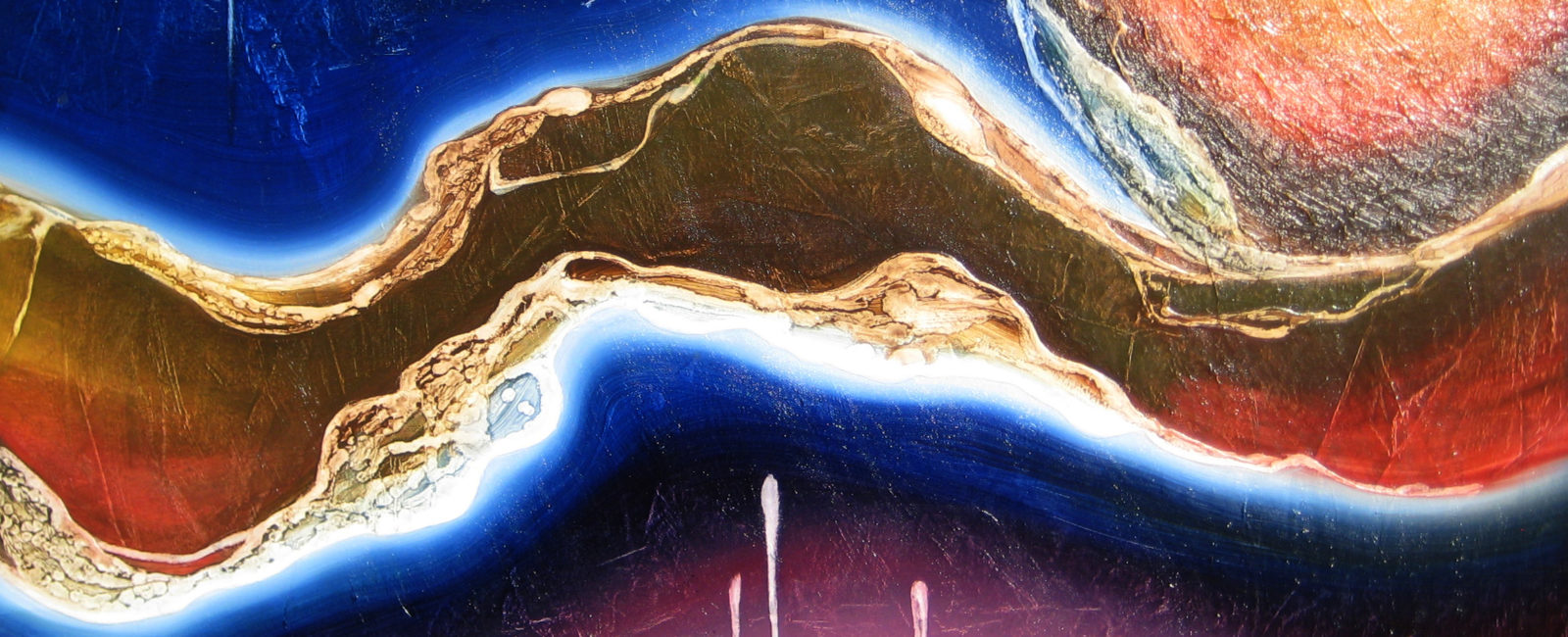“There is something uniquely individual in the paintings of DHT. This is partly due to his choice of abstractionism. Like many pioneered abstractionists at the beginning of the twentieth century, his abstract art uproots the classic common view that a painting should portray reality or imitate nature. The artist Mondrian, for example, stated his strong belief in his 1919 declaration-like writing that “today the intellectual turns away from nature, and his life obviously becomes more abstract.” In the same way Kandinsky explained clearly that “when religion, science and morality (the latter heavily criticized by Nietzsche) are shaken, and when their external supports collapse, man no longer looks out but inward.” Since then, a painter encounters what Malevich calls “the experience of the non material object” distinct from external nature (landscape or form). This experience not only opens to the artist new horizons never before discovered, but also invites the viewer into a completely new reality. It demands that we go further, deeper than the surface of colors and features, in order to touch the nature (essence) of the painting. Painting is no longer understood as a depiction of an object but as a presentation of the state of mind of the painter. The paintings of Trieu present to the viewer his unique individuality.
In a world composed of signs and symbols, where is the Rosetta Stone to decode their meaning? Negative critics of abstractionism undervalue human interiority (which is boundless) and the richness of imagination (which is unlimited). From the time of Mondrian who believed that the simple intersection of two straight lines at right angles composed a balance, a harmony of mostly uncolored elements (white black and grey), blended with some colored elements (red, blue, green, yellow); today abstractionism has progressed and continues to offer new discoveries. Mr. Trieu does not stop at the horizontal and vertical lines of Mondrian, nor does he drip colors on canvas laid on ground, like Pollock.
Trieu does not complicate the abstraction of his art by naming them by number. Trieu comes closer to the viewer by giving his paintings names: Meeting Point, Transcendent Night, Coming and Going, Endless Journey, Angry Sea, Dream…. Trieu’s escape on the sea has left a remarkable trace on his paintings as the colors red and black are reminders of a horrible past.
Trieu’s new group of paintings shows his self-reconciliation. The paintings such as Peaceful Day Coming, Thousand Miles, Lovers Inseparable, with their soft duotone, and A Peaceful Dawn, with its pure blue of sea and sky, demonstrate a state of newly rediscovered serenity in his soul.
The paintings of Trieu are the result of his long journey of escape from Vietnam. As many other journeys are recorded in words and published as books, Trieu’s paintings present a different form of expression of feelings, recorded in a different grammar and vocabulary, but telling the story of the same journey to exile, initiated by the predestined events of 1975.”
Lam Van Sang, Viet Mercury
Arts and Culture

Comments are closed.